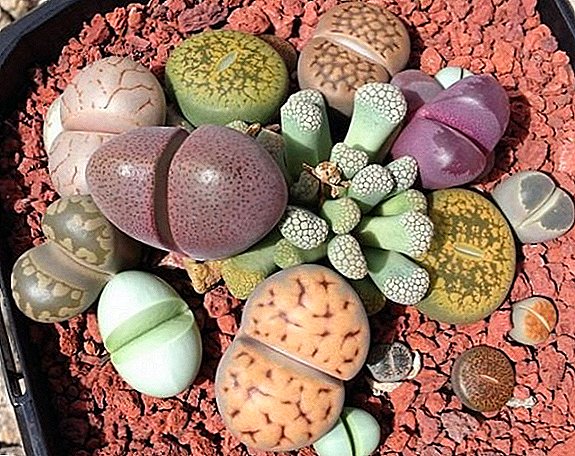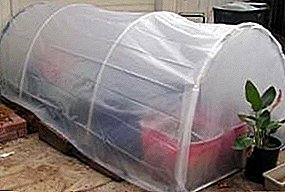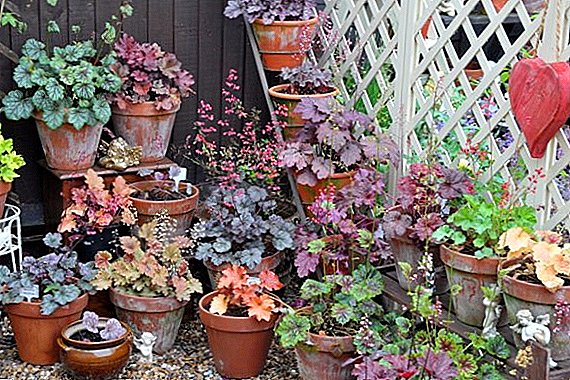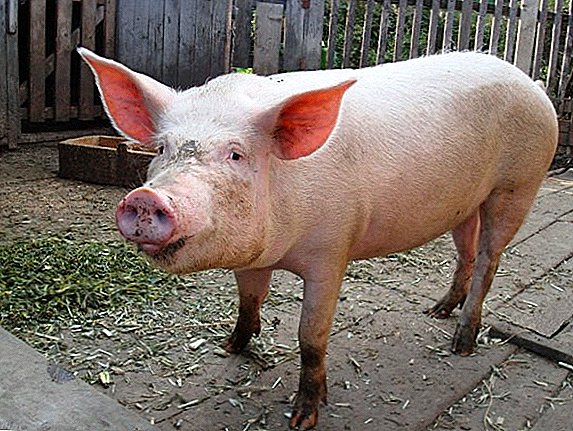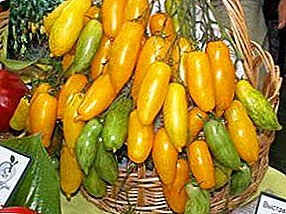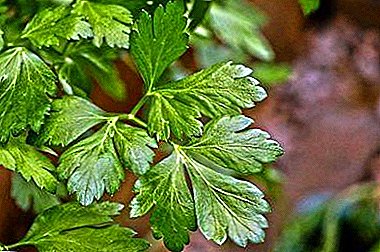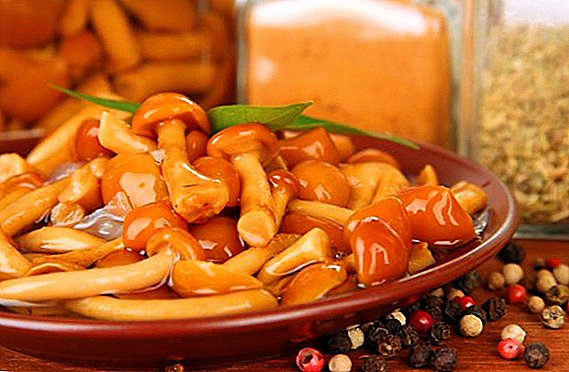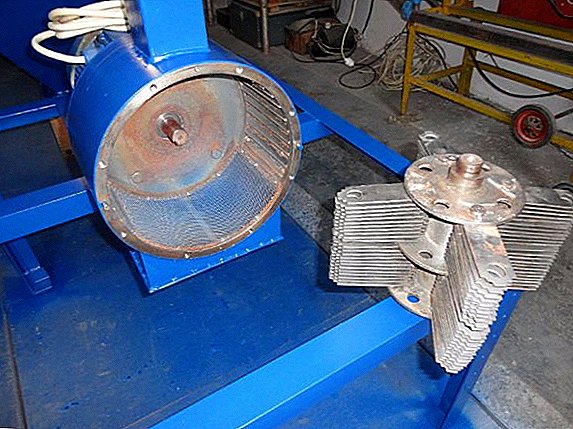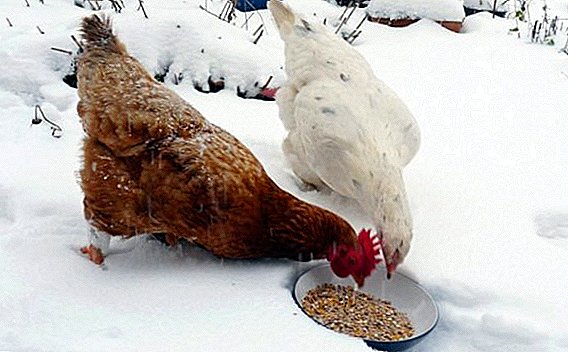 The productivity of chickens depends on their diet and conditions of detention. It is not a secret for anybody that during the winter period the egg production of birds is sharply falling. That is why it is very important to provide proper care and nutrition for the hens of egg breeds, then their productivity will be evenly distributed throughout the year. In this article, we will look at how to keep a proper diet for poultry, as well as the necessary conditions for their housing.
The productivity of chickens depends on their diet and conditions of detention. It is not a secret for anybody that during the winter period the egg production of birds is sharply falling. That is why it is very important to provide proper care and nutrition for the hens of egg breeds, then their productivity will be evenly distributed throughout the year. In this article, we will look at how to keep a proper diet for poultry, as well as the necessary conditions for their housing.
What is different in winter feeding?
With the onset of cold weather, the productivity of chickens is significantly reduced. And this is not surprising, because lowering the temperature and nutritional deficiencies cause stress in birds - chickens need more energy to warm themselves. In addition, you must consider the cost of forming eggs.  In the summer, birds receive a large amount of green and protein foods (worms, bugs and spiders). In winter, for poultry sources of useful items are not available. However, the impact of these factors can be minimized with a balanced diet.
In the summer, birds receive a large amount of green and protein foods (worms, bugs and spiders). In winter, for poultry sources of useful items are not available. However, the impact of these factors can be minimized with a balanced diet.
Additionally, you must also consider other factors that affect poultry production. These include:
- significant decrease in ambient temperature;
- lack of heat source;
- reduced mobility of birds;
- change the duration of daylight.
These factors can be attributed to the care of birds in the winter, but the diet also has an impact on egg production.
Learn more about the period of egg production in pullet chickens, as well as about solving problems with egg production: chickens do not carry well, carry small eggs, and peck eggs.
With the onset of cold weather, chickens are changing their diet. At the same time the bird needs a lot of green and succulent feed. To do this, can be used with the addition of mixed roots and chopped herbs, which is recommended to be harvested in the summer. For example, a pumpkin or zucchini can be given in the cut form, and the birds will peck them with great pleasure. Also, the roots can be ground and mixed with bran or cereals, which will contribute to their absorption. 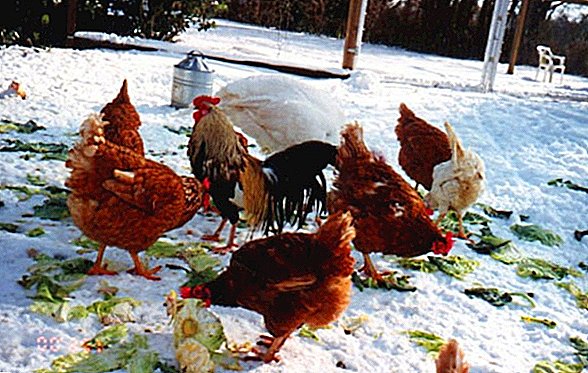 Do not forget that green food has a large number of nutrients. That is why in the winter it will be useful for chickens to give fresh coniferous tree branches. They will have a double effect on birds: first, the bird fills the deficit of minerals and vitamins; secondly, the essential oils that the plant secretes contribute to the destruction of harmful microorganisms.
Do not forget that green food has a large number of nutrients. That is why in the winter it will be useful for chickens to give fresh coniferous tree branches. They will have a double effect on birds: first, the bird fills the deficit of minerals and vitamins; secondly, the essential oils that the plant secretes contribute to the destruction of harmful microorganisms.
Did you know? In March 2016, a farmer in Germany found a chicken egg weighing 184 g, and a week later he found another weighing 209 g. It is interesting that such large eggs laid two different layers Ingrid and Günther Main. However, they could not become world champions, because the largest egg was found in the United States in 1956, and its weight was 454 g.
Additionally chickens need fermented milk products, fish meal or fat, as well as high calcium supplements. Do not forget about the warm water, without which the bird just can not do. 
Conditions for egg production in the hen house
Proper nutrition is very important in the winter, but this is not the only condition that can improve the egg production of chickens. Particular attention should be paid to the content of poultry, because the chicken coop is the main place of stay of birds, and the warmth and comfort will only contribute to egg-laying. Preparation of the coop must begin long before the onset of cold weather.
Learn how to build a chicken coop for the winter for 20 chickens with your own hands.
Purity
With the onset of autumn, it is necessary to disinfect the chicken coop. This will kill all microorganisms that may adversely affect the health of birds. For this all surfaces treated with lime: take 2 kg of lime and dilute them in 10 liters of water, and whiten the walls, the ceiling and the floor with the resulting solution. Some farmers prefer to heat the room and use a burner to do this. But whatever method you choose, disinfection must be carried out before the onset of cold weather.  However, maintaining cleanliness in the winter does not end there. Cleaning the hen house should be done regularly, both in summer and in winter. At the same time, the frequency of harvesting in the cold season increases: on average, it is carried out once a week and remove all litter, update litter, which may consist of a layer of straw or sawdust at least 7-10 cm thick.
However, maintaining cleanliness in the winter does not end there. Cleaning the hen house should be done regularly, both in summer and in winter. At the same time, the frequency of harvesting in the cold season increases: on average, it is carried out once a week and remove all litter, update litter, which may consist of a layer of straw or sawdust at least 7-10 cm thick.
Important! The birds' health is very dependent on the humidity in the hen house, therefore it is necessary to ensure that the litter is not wet. Excessive moisture can cause litter rot and reproduction of pathogens.
In addition to cleaning the house, poultry also needs hygienic procedures. For this in the hen house set the tray with ashin which chickens will take air baths. Ash helps cleanse feathers and prevents parasites from reproducing. In addition, this procedure gives the feathers a special beauty. In the room they install another tank with sand, which is very fond of birds.
Some farmers use a litter of straw mixed with "Net-Plast"which is a complex of bifidobacteria, metabolites, lactic acid bacteria and other substances. This composition is mixed with straw or sawdust. Substances contribute to the decomposition of litter, heat and eliminate unpleasant odor, which simplifies the care of pets, as this litter does not need to be cleaned or replaced for a long time. 
Temperature
Maintaining an optimum temperature for birds in a warm climate will not be difficult. But for poultry in winter, the temperature should be within + 12… + 18 ° С. Sudden changes in temperature can adversely affect chicken production. To ensure proper thermal mode, you can use a thick bedding. The source of heat in this case will be the litter, which in the decomposition process will release methane and heat the chicken coop. At the same time it is necessary to provide a good ventilation system so that the bird does not breathe toxic substances.
Important! If the air temperature is 5 ° C, then the productivity of the chicken is reduced by 15%. However, too high a temperature also reduces egg-laying by 30%.
The litter is laid in a thick layer and carefully tamped: in this case, the number of air layers will be minimal, and the chickens will not freeze the legs. In some regions, a layer of straw or sawdust can reach 15 cm. In winter, the litter is only partially changed, removing the upper part, while it is tedded and the fresh layer is filled. Full replacement is carried out only in the spring when the temperature is normalized. A sufficiently deep litter is able to maintain a normal temperature in the hen house. It is very important to ensure that there are no drafts and crevices in the room.  If the use of litter, as well as the insulation of the chicken coop does not allow to maintain the proper temperature, then you should use different ways of heating. Such heating methods involve the installation of a small stove, radiator, lamp for heating or heat gun. The choice of heating methods depends on the financial possibilities. However, it is important when installing the heater to find the most optimal place where chickens can not be injured.
If the use of litter, as well as the insulation of the chicken coop does not allow to maintain the proper temperature, then you should use different ways of heating. Such heating methods involve the installation of a small stove, radiator, lamp for heating or heat gun. The choice of heating methods depends on the financial possibilities. However, it is important when installing the heater to find the most optimal place where chickens can not be injured.
Check out possible ways to heat the coop in the winter.
Lighting
Changing the length of daylight also negatively affects egg production. If the duration of daylight hours becomes less than 14 hours, then the chickens carry eggs by 17% less than in the summer period, while observing a balanced diet and thermal conditions. In this regard, it is necessary to observe the duration of daylight. In the autumn you must use artificial lighting. For convenience, it is recommended to use the automatic system on and off: in this case, the probability of jet lag in birds is removed.  The ideal beginning of the day for a chicken is considered the interval from 6:00 to 9:00, and the end - from 17:00 to 20: 00-20: 30. It is recommended to use fluorescent lamps, as their light is most similar to daylight.
The ideal beginning of the day for a chicken is considered the interval from 6:00 to 9:00, and the end - from 17:00 to 20: 00-20: 30. It is recommended to use fluorescent lamps, as their light is most similar to daylight.
Important! If you do not use artificial lighting, the chickens begin to shed and stop to rush.
Warming the chicken coop
Warming the room, you can not only maintain the optimum temperature, but also protect the birds from the effects of negative factors.
The main ways to warm the chicken house include:
- the lining is insulated with walls and doors, which allows to close the gaps and prevent the occurrence of drafts;
- insulation of windows using plastic film and foam. Foam allows you to seal all the cracks around the perimeter of the frame, and the film eliminates blowing from the glass;
- heater installation.
To ensure optimal housing conditions, which contribute to good egg production, it is necessary to use the full range of preparatory work of the poultry housing facility. 
Feeding
Maintaining a high level of chicken egg production throughout the year depends on the correctness of the preparation of the diet, which will contain a sufficient amount of nutrients.
What to feed
The daily diet of chicken should contain (in grams per 1 individual):
- cereals (corn, wheat, barley) - 120;
- boiled root vegetables - 100;
- crushed chalk and shell - 3;
- bone meal - 2;
- cake - 7;
- Baker's yeast - 1;
- table salt - 0.5;
- mash -30.
The diet should include not only dry, but also wet food. Dry food consists mainly of cereals or fodder, which are rich in fiber, carbohydrates and vitamins. However, chickens need protein and minerals found in other foods. Herbal flour can also be added to the diet, which is very rich in minerals and vitamins.
Important! You can not give feathery green potatoes or decoctions based on it, as it can cause poisoning in poultry.
How many times to feed
In winter, when energy consumption increases significantly, it is necessary to feed the bird 3-4 times a day. At the same time, in the evening it is necessary to give dry food, as in the process of digestion it releases more energy and allows you to safely transfer the night cooling. For the rest of the day, preference should be given to mixtures or combined feed. 
Essential Supplements
With a shortage of sources of nutrients, chickens need additional vitamin supplements, which in the summer they received from greens, vegetables and their tops. In the winter, there are no such nutrient sources, so farmers should add them to their food. Layers need a special form of vitamin supplements that do not contain hormones and growth stimulants, as well as preservatives. Such additives are a group of premixes that contain vitamins, micro- and macronutrients, antioxidants.
The source of useful elements that a hen needs is:
- fish oil - a source of fatty acids, which are indispensable for the body of birds;
- dried seaweed - helps to strengthen the shell and saturate the yolk with healthy substances, which makes its color saturated;
- probiotics - allow you to maintain bird immunity;
- Apple vinegar - strengthens the health of the bird and its plumage.
Important! If a chicken starts eating an egg, it means that its body is deficient in minerals and vitamins.
In addition, the layer needs vitamins:
- Vitamin A - helps to carry a high-quality egg (large with a yolk of rich color). The lack of this vitamin can be determined by the state of the cornea of the eye and skin;
- Vitamin E - helps to increase egg-laying and maintain immunity, with deficiency there is a dysfunction of nerve and muscle tissue;
- Vitamin D - prevents the development of rickets, with a lack of vitamin the egg shell becomes soft;
- B vitamins - contribute to the normal functioning of the digestive and endocrine systems, and also prevents the development of skin diseases.
 The most optimal source of vitamins is the harvesting of wild plants (acorns, nettle, mountain ash, wild rose), which can be crushed and stored in bags.
The most optimal source of vitamins is the harvesting of wild plants (acorns, nettle, mountain ash, wild rose), which can be crushed and stored in bags.
Read also about the preparation of feed for laying hens at home and daily feed rates.
The recipe for preparing food for birds in the winter
To increase the egg production of chickens, you can use the purchase of feed, the composition of which is unknown to you, and you can not vouch for its quality. However, you can cook it yourself. So, for the manufacture of balanced feed at home you will need (in grams):
- maize - 500;
- barley - 100;
- wheat - 150;
- sunflower meal - 100;
- fish meal - 60;
- meat and bone meal - 80;
- yeast - 50;
- peas - 30;
- grass meal - 50;
- vitamin complex - 15;
- salt - maximum 3.
All ingredients are thoroughly mixed. As a result, you get excellent quality food, which is not inferior to the purchase, but much more profitable from the financial side. Such feed should be mixed with a small amount of warm water before serving.
Did you know? The time it takes to form a new egg in the body of the hen takes about 25 hours, while a new egg begins to emerge after a certain amount of time. Thus, the layer is simply not able to carry 1 egg daily.
Reviews of poultry farmers about the winter feeding of layers


In order to maintain a high level of egg production in laying hens in winter, it is necessary to carry out a thorough preparation, which includes the preparation of a balanced diet, equipment for the chicken coop and the preparation of nutritious greenery. After such work, the result will not be long in coming, and your chickens will regularly delight with a large number of high-quality eggs. In the preparation of a balanced diet should not forget about vitamin and mineral supplements, also in the chicken coop should be set capacity with sand, which will facilitate the process of digestion.


